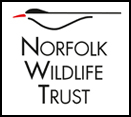The press release issued by the Norfolk Wildlife Trust on 8 August 2022.
Very soon Norfolk County Council will be opening a public consultation on the Western Link of the Northern Distributor Road (NDR) around Norwich. The road will travel between Weston Longville and Ringland, joining the A47 near Horningham. The proposed road will also include a viaduct over the River Wensum. Norfolk Wildlife Trust is firmly against the construction of this road. NWT believes there is clear evidence that the road will result in unacceptable environmental damage, and not least, it fails to meet the country’s legal obligation to prevent habitat loss and climate change.
The landscape the road would cross is a well-connected network of vital wildlife habitats, including ancient woodlands, grassland, crystal clear chalk-streams and wetland floodplains. The area supports several species of bat, including the rare and protected barbastelle bat. It is a beautiful landscape supporting complex communities of plants and animals, including declining farmland birds such as yellowhammer and linnet.
The proposed road will fragment this wildlife-rich area, damage the River Wensum Site of Special Interest (SSSI) and Special Area of Conservation (SAC), and destroy parts of several County Wildlife Sites. The proposal will not only compromise irreplaceable ancient woodland, it also threatens the wildlife and landscape value of the River Wensum and Tud. Both are astonishingly rare chalk river habitats, and are full of aquatic plants, invertebrates and fish, such as brown trout. Chalk-stream rivers are undoubtable our most important and valuable habitat, with less than 200 found across the globe, Southern England holds 85% of these precious and vulnerable gems. Not only would a viaduct blot the landscape, its construction could threaten the river with pollution hazards, and the detrimental effect of long-term road surface run-off are still unknown.
The United Kingdom is one of the most nature-depleted countries in the world. The legally binding Environment Act commits the UK Government to work towards nature’s recovery. Overwhelmingly, people understand that when nature thrives, so do we. NWT believes that it is time for local and national authorities to place the protection of our natural environment at the forefront of all decision making.
One of the most concerning aspects of the proposed Norwich Western Link route is that it would run through the home of what is thought to be the UK’s largest barbastelle bat colony, a group of linked maternity woodland colonies described by local experts as a super-colony. The barbastelle bat is in serious decline globally, and barbastelle bats have the highest level of legal protection given to wildlife in the UK. These colonies are highly dependent on the surrounding rich tapestry of habitats, regularly travelling up to six kilometres to their feeding grounds, and the road would not only destroy roosts, but also isolate these colonies from each other and sever important corridors between the roosts and feeding sites. With the focus of the recent Environment Act rightly on nature’s recovery, this super-colony should be designated and protected from development, rather than left to suffer death by a thousand cuts.
Norfolk County Council have admitted that the area of impact will extend much further than the width of the carriageways. The land around the proposed road will become fragmented and degraded for wildlife through noise, lighting and pollution, with a worrying tally of road deaths to birds and bats being of particular concern.
Planners, of course, will attempt to mitigate for habitat loss, but fifty saplings are no replacement for a hundred-year-old oak with flaking bark and knot holes that these bats depend on. We are just beginning to understand the complexity of woodland soil, and the interconnectivity through the ‘wood wide web’ that is associated with ancient woodlands, for these eco-systems can take centuries to form. Wildlife underpasses, green bridges and bat gantries rarely work. The existing bat gantries on the NDR cost one million pounds each, these are designed to encourage bats to fly over the traffic, but evidence suggests they don’t work. Failed wildlife mitigation is no mitigation, and the term ‘green-washing’ has been coined to summarise the manner in which planners try and push through applications, often based on poor evidence of successful wildlife protection.
In 1926, when the then Norfolk Naturalist Trust took it upon themselves to purchase land on the North Norfolk coast at Cley, it was for no other reason than to protect wild birds. This was a new and revolutionary idea at the time. It’s sad to think that nearly one hundred years later, we are still having to fight against the destruction of Norfolk’s beautiful landscapes and wildlife, despite – apparently – being legally protected by law.
If you’d like to find out more about the Norwich Western Link and how you can take action to support wildlife from this development, please visit www.norfolkwildlifetrust.org.uk/ndr.
